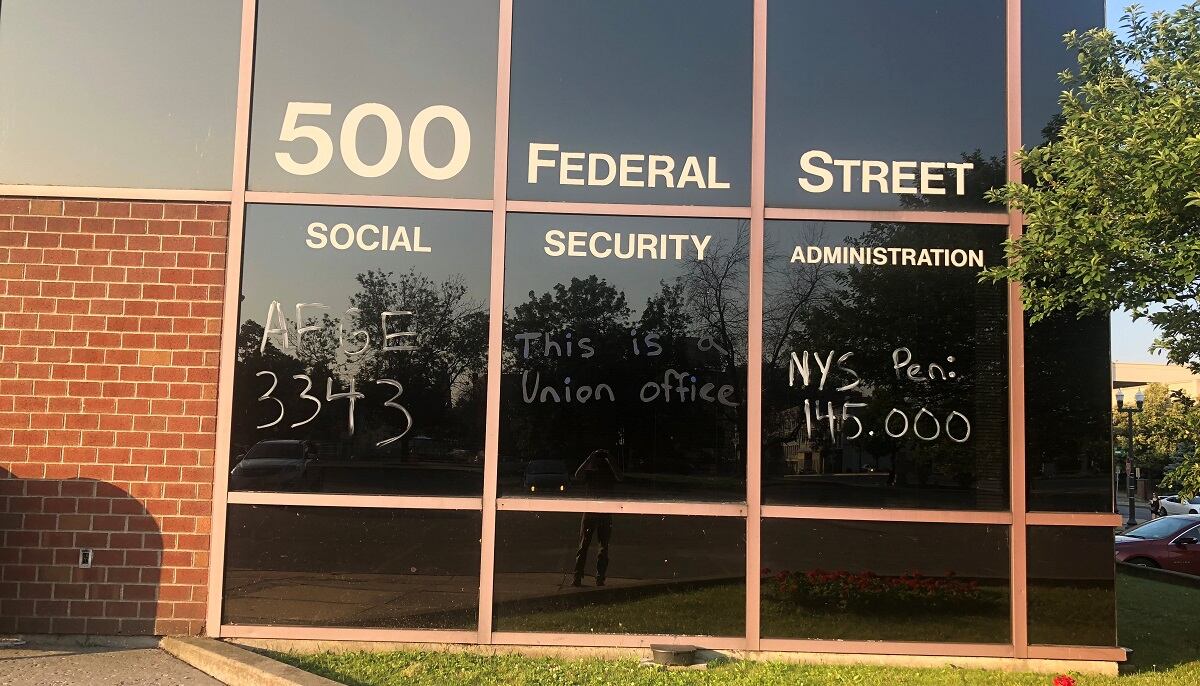Update: Nov. 1
The Social Security Administration has given employees an additional two weeks to prepare for the end of telework at the SSA Operations Office, Acting Press Officer Mark Hinkle announced Nov. 1.
The approximately 25 percent of operations employees that participated in the Social Security telework program were initially given just two weeks to prepare before they would be required to be in the office full time, a timeline that union officials said would be too short for some employees to make the arrangements necessary to come into work.
Employees now have until Nov. 22 to finalize plans to end their telework schedule.
And though employees have insisted that the work they do from telework locations is substantially similar to what they would be doing in the office, Hinkle said in a statement that the plan for eliminating telework was designed to increase the agency’s responsiveness and customer service:
“People wait far too long to reach us on our 800 Number, for face-to-face service, for an answer on their disability claim and for our processing centers to handle important actions like paying favorable decisions and correcting records. For example, we do not want a member of the public to take time to visit one of our offices expecting to meet with us in person only to be handed a telephone to connect to a teleworking employee. Our service to the public must be more responsive to their specific needs.”
Original Article: Oct. 29
Over 44,000 staff at the Social Security Administration’s Office of Operations discovered Oct. 28 that a six-year telework program at the agency would be coming to a close Nov. 8, giving employees that rely on such a program less than 10 work days to make themselves ready for new in-office requirements.
“In recent years, Operations has faced a number of significant service challenges, including increases in wait times for customers on the 800# and in field offices, processing times for program workloads, and [Program Service Center] backlogs. Our Commissioner Andrew Saul is committed to improving customer service and this is his highest priority for the agency,” SSA Deputy Commissioner for Operations Grace Kim wrote in an email to staff obtained by Federal Times.
“The Commissioner has already directed additional staff and other resources to Operations to help us improve our service to the public, particularly our field office wait times, 800# service, and reduction of backlogs in our PSCs. As Operations employees and public servants, we share the commissioner’s commitment and must ensure we do everything we can to improve service to our customers. That includes continually evaluating the way in which we accomplish our work.”
RELATED

According to the letter, approximately 25 percent of Operations employees participate in the telework pilot that was started in 2013 and allows employees to telework one day a week or two days per pay period.
According to Sherry Jackson — third vice president of the American Federation of Government Employees SSA Council 220, which represents impacted employees — the agency has already invested significant infrastructure to support teleworking employees, who predominantly perform the same jobs at their telework locations as they would in the office.
“In the field offices and workload support units, and even telephone service centers, most questions are answered over the telephone. There is not a real reason for people to have to come into the office,” said Jackson, explaining that even if a person were to come into the office to talk about a claim or filing, they would be put on the schedule for a phone interview or, in an emergency, could be placed on an office phone with a teleworking employee on the other end.
Even some SSA offices may be unprepared for the loss of telework, as the space within those offices fits a small number of employees, with the expectation that some will be teleworking.
“You can’t have it both ways. You either want people to come into the office, and as such you’ll expand your space and what-have-you for that, or you’re going to continue this philosophy of directing everything to the telephone or the internet,” said Jackson.
According to numbers prepared by Patrick Quinn, secretary-treasurer for AFGE Local 1164, the costs of transportation and time required to get to the office will likely cost the agency and employees themselves a total of $18 million a year, not including the childcare or eldercare costs that employees will have to take on without telework days.
But Jackson said that there are also less obvious costs that the agency might incur as a result of the new policy.
Employees that are ill but would still be capable of working will either have to take paid time off — removing their work hours from that day — or come into the office and risk infecting other employees, potentially increasing the number of employees that aren’t able to work in a given period. With telework, those employees can work from home while sick.
The change could also directly cost the agency if extreme weather causes a particular office to be inoperable, forcing employees to commute to another office — the cost for which is charged to the agency — when they would have otherwise teleworked that day.
RELATED

A loss of telework options may also come with a workforce loss, as those employees that were hired within the timeframe that telework was offered may choose to leave for a more flexible position.
“For a lot of millennials and Generation Xers, our expectations was that this was part and parcel with taking the job,” said Jackson. “It’s almost like you were being dishonest with the people you hired.”
According to Office of Personnel Management Data, around 20 percent of SSA employees were hired in or after 2014, when the telework policy was solidly in place. Should those employees choose to leave, it would add to the already 2,500 person workforce reduction SSA saw from 2015 to 2018 and could exacerbate problems with wait times and responses.
Acting SSA Press Officer Mark Hinkle told Federal Times that the objective of the policy change is “to improve service delivery and to focus all of Operations’ resources on providing service to our customers.”
The change to telework policy was introduced under the new collective bargaining agreement between SSA and AFGE beginning Oct. 27; however, according to Jackson, that agreement does provide for telework availability and requires that the union be given notice and the ability to consult with agency leadership about the decision.
But Jackson said that the union was “blindsided” by the policy.
The decision to cancel telework at SSA Operations follows a trend of federal agencies instating policy that runs counter to OPM guidance on work-life programs, which calls telework an “important tool for achieving a resilient and results-oriented workforce.”
Jessie Bur covers federal IT and management.
In Other News




